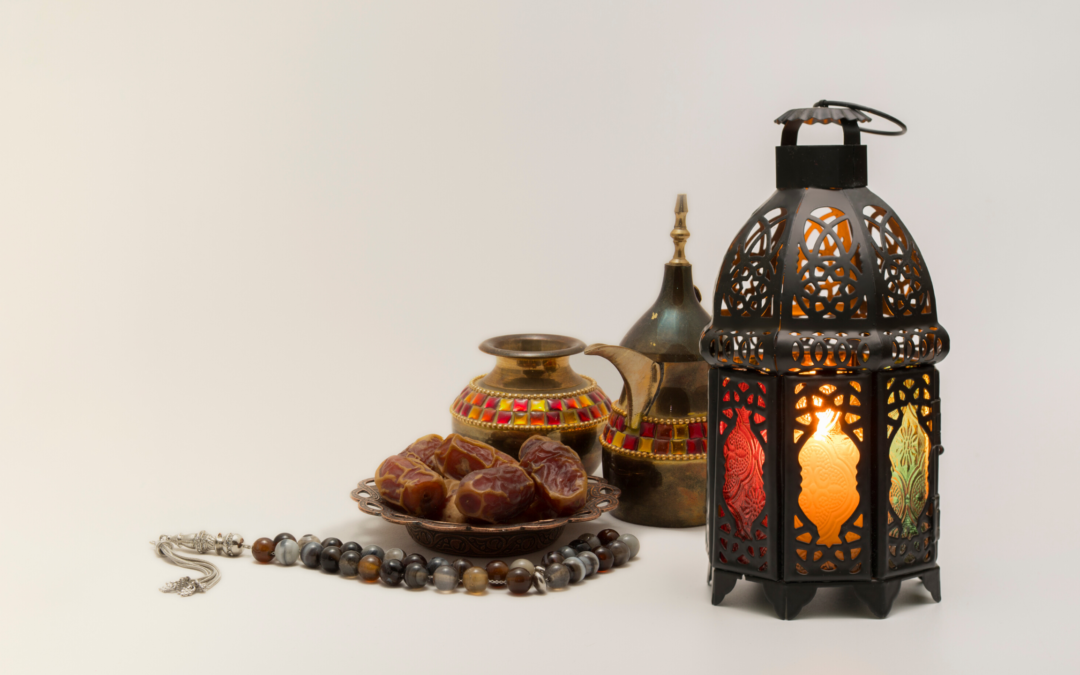Ramadan falls in the summer months and for those living in the Northern hemisphere it will be a long fast day. In order to have sustainable energy during the month of Ramadan it’s time to reflect over your current diet and lifestyle and consider some minor changes you can make to introduce healthy foods.
The mistake most people make is they think they can eat anything they want at sunset when they break the fast.
Pre-Dawn Meal
Do you find yourself skipping the pre-dawn meal, as you don’t want to eat too early in the morning or need your beauty sleep?
It’s essential to start the day with a balanced meal, which is both filling and provides a gradual release of energy. Avoid simple carbohydrates; think white foods like white bread, white rice or rotis. Instead consider including complex carbohydrates like whole grains (brown rice, whole wheat toast, etc) with a healthy choice of protein and fat like eggs, creamy cinnamon porridge, yogurt, nuts, seeds and cottage cheese. Do drink lots of water and also include hydrating fruits like oranges, grapefruits, watermelons, coconut water, etc.
Iftar:
When breaking the fast enjoy 1 or 2 dates, but not too many as these are high in sugar; one Medjool date has 16 grams of sugar (source: USDA Food Content).
Remember the evening meal should be a meal and is NOT a feast; so avoid piling the plate up too high or going for extra helpings as you will suffer from indigestion later.
Below are some suggestions with links to my recipes on how to make some small changes to your meals that will make a big difference to your energy levels and waistline:
Instead of fried foods like samosas, pakodas, bhajias, etc have baked pakodas or chickpea bowl (made with tomatoes, chickpeas, coriander leaves, onions, etc)
Instead of fried sweet cooling foods like rasmalai, gulab jamun, rasgulla, etc. you can have Kheer (rice pudding made with reduced sugar), Savia (vermicelli made with reduced sugar) or yogurt with fresh fruit.
Instead of sweet foods like barfi or other mithai you can have nut & fruit bar, energy balls, piece of fresh fruit or fruit smoothie.
Avoid sodas and soft drinks. Water should be your main drink and you can have some fresh fruit & vegetable juices and coconut water.
Avoid the creamy oily curries (where you visibly see the oil settling and forming a layer above.) Use less oil or ghee when cooking, don’t worry, it will still taste good and you will feel lighter for it. Use tomato based curries instead of cream ones. Also try roasting or grilling your meat so they can cook in their natural fats, e.g. chicken or lamb. You can have steamed or BBQ fish with sauce.
Have a variety of vegetables and cook these gently or pan fry lightly so you can taste their fresh flavours. Vegetables are the main missing food group for most people and I cannot emphasise that these should be a significant part of your meal, have them steamed, stir-fried, raw, in soups, etc.
Use spices instead of adding pre-packaged masalas that may contain MSG and other additives
You don’t need to give up your favourite unhealthy foods, but have them in small portions and eat them occasionally. Most importantly leave the feasting for the end of Ramadan, Eid.
Having read this article I hope you are inspired to make some changes this Ramadan.
This article is from my blog and was written for Fuchsia Magazine.
